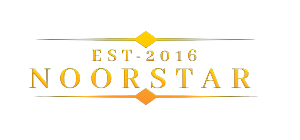Content
- Atlassian Support
- Why do you need a technology roadmap?
- Phase 3: Follow-up Activity Phase:
- Knowledge and Skills for an Effective Roadmap
- Application Roadmap
- Support services
- What are the components of a technology roadmap?
- Insight Intelligent Technology Report 2022: IT Ambitions for Business Transformation
The stakeholders need to be notified of the new change to the technology roadmap. Instead, you’ll have to update document from time to time based on changing business needs. There could be a preplanned initiative that now doesn’t make sense because of the change in company goals, market, or user needs. Hence, it is fundamental to revise the roadmap every few months to accommodate unplanned changes. Upcoming technology changes noted by the technology roadmap can help the other teams plan their activities accordingly. This leads to increased productivity, as their activities and tasks are better aligned with the upcoming changes.
These situations are reactive and if corners have been cut to reduce costs, such as avoiding the creation of the roadmap, the costs of fixing the problem can quickly outweigh the initial cost. And now that we’ve covered most of the theory, let’s see how you can create your own tech roadmap. it roadmap It’s not always easy for these two branches to agree on critical issues. This point, TEAM International remains focused on preserving and delivering the high service level that our clients and partners expect. We have always remained committed to our values, quality standards, and goals.
The main purpose of such a roadmap is to stimulate staff activity through a better understanding of perspectives and ways to improve things. Although the IT roadmap describes specific activities and projects, the future remains unknown and far from being always predictable. However, even though such a roadmap is based on market data, it is by no means predictive. To bring current development-related events into the “planned” vision of the future, the roadmap should be updated frequently enough. Modern organizations can use anywhere from a few to several hundred applications in their workflows.
Atlassian Support
When organizing a roadmap, it is important to specify which professionals are responsible for certain tasks. This allows professionals to recognize the expectations and also informs the rest of the team who to contact regarding the specific task. Depending on the size of your team, you may directly assign a task to an individual or assign entire aspects of a project to a team of professionals. For example, if your goal is to establish a company-wide messaging system, then it’s helpful to detail what effect you hope this change has. This practice helps to solidify your goals and motivate other professionals to work toward them.
- Perhaps no area of business will need to be updated and projected more accurately than its use and application of available technologies.
- A product roadmap is as essential for an agile team as it is for a traditional development team.
- Some organizations use a technology roadmap template to streamline internal processes and systems, apart from strategizing how the current IT infrastructure can help achieve business goals.
- Risk factors refer to any internal or exterior challenge the company expects for the technology change.
Internal & External Product Roadmap — tied to different types of audience. Strategy & Market Roadmap — deals mainly with high-level details and market state. Product managers must be aware of some common traps when using and updating their internal https://globalcloudteam.com/ roadmap. Is a map for feature launches and is a simple way to highlight pressing issues and the timeline of resolving them. Figma uses a Coda doc and a bit of social engineering to design the fastest way to implement company-wide changes.
After reading all this, you might reasonably ask whether it is necessary to build a product roadmap. First of all, any document on its own requires a lot of effort to create. A product manager will spend time gathering all the input data from stakeholders and the product team. The basic understanding of a product roadmap type may not be enough if you are going to build your own. In this section, we’ll provide some templates that can be used or shared with your audiences. Different groups of people are connected with the product, so you want to communicate with precision different information to those groups.
You must be ready to answer any questions that relevant stakeholders might have. IT developments support other departments, but you may need to invest in IT before you can invest elsewhere. A roadmap means fewer interdepartmental frustrations and a clear picture for everyone to see. So, when you allocate your budget to grow your IT department, your roadmap will ensure it grows in line with the rest of your business and ensure you can continue to meet your targets. Visualize how resources will be allocated by assigning roadmap items to specific people or departments.
The now-next-later roadmap describes the tasks/sprints/features in a prioritized way. Basically, it’s a simplified version of a product backlog that categorizes items of information in horizontally and vertically. It shows what will be released now, what’s prepared next, and what will be released later. The purpose of this roadmap is to show priorities in the simplest way possible. The product roadmap audience can be internal, e.g. your team and executives, or external, customers and investors.
Why do you need a technology roadmap?
It’s going to take a while before you reach your long-term goals. Without achievable milestones, it’s difficult to keep your team motivated and hardly possible to track the progress. By creating an IT roadmap and sharing it across your organization, you’re creating visibility that leads to better alignment among stakeholders and employees. A roadmap solves the problem of under-communication and helps everyone involved to be on the same page. Now that we’ve discussed what an IT roadmap is, let’s review a few of the reasons your organizations could benefit from having one to map out and communicate your various technology initiatives. In this IT architecture roadmap, you can see several key components to the company’s product suite that a designated software architect is responsible for building.
Material resources include important hardware, gadgets, software, and other equipment you possess. Financial resources, in their turn, are represented by the project budget, often defined by a sponsor before launch. As business conditions change, it’s appropriate to adjust your plan as needed. By creating an IT roadmap, employees will have a better understanding of their individual responsibilities, and managers will have a greater capacity to offer support as needed. Roadmaps often include deadlines for certain expectations, keeping professionals focused and ready for each step of the plan. In table 1 all the different sub-activities of the preliminary activity phase can be seen.
Phase 3: Follow-up Activity Phase:
Make sure to cover the cross-functional dependencies between different teams. There is no need for your enterprise IT roadmap to replicate your project plan. Instead, outline focus areas, tasks, and activities on a high level.

Product owners use them to outline future product fixes, functionality, and features while providing release dates. There are practical technology roadmap examples you can learn from. Since you’re implementing a new technology system, users will likely require training to adopt the system properly.
Knowledge and Skills for an Effective Roadmap
Developing an IT roadmap aims to establish a productive dialogue among all business units and ensure that IT goals align with company goals. If your company is cloud-first, the question of “to go cloud or not” should not bother you. However, if your company still uses mainframe systems or dedicated servers, as most do, cloud migration is a hot topic. Nonetheless, a poorly planned and executed cloud migration can render your business infrastructure inoperable.

Project leads, managers and information technology professionals often use technology roadmaps to visualize the progress of a company’s technological change. If your company is planning to improve its technology, it’s helpful for you to know how to use technology roadmaps. In this article, we define what a technology roadmap is, explain its importance and share how to create one of your own. An IT roadmap is the key to moving forward with your technology in the best, most strategic way. As a strategic IT provider, we help develop intensive IT roadmaps for our clients, creating goals and initiatives to make the most out of their technology and systems. If you are ready to take your technology to the next level and start planning for the future, reach out to us today.
Application Roadmap
Don’t forget to follow up with stakeholders on any feedback they might have to share. Make sure they can provide the feedback at a designated place and at any time post-presentation. Share the roadmap with relevant stakeholders and an accessible place. You’ll want them to be able to visit at any time to take a look at it.
Support services
For instance, we recommend listing goals and improvement opportunities, providing resource estimates, and defining roles and responsibilities for each project. An enterprise IT roadmap should also include risk assessment, planned releases, and the main milestones on the way to achieving your business goals. Professionals include several deadlines in a technology roadmap, as they plan to make the technological advancements in increments. This allows the company a smoother adjustment period between changes. It also ensures professionals know when they expect to complete a certain part of the project. Risk factors describe the potential internal or external threats that may prevent successful implementation of new technologies.
A monthly subscription costs $49 for businesses, $19 for individuals. A modern alternative to spreadsheets and presentations are services specifically designed to make road maps. They are paid, but provide maximum opportunities for visualization. Maps created with the help of such services are automatically updated for all users. A specialist from an outside company (e.g., a consultant) can help with the roadmap process and interviews with stakeholders. In times of crisis, scaling down aims to save as much operational infrastructure as possible in order to avoid critical losses.
Insight Intelligent Technology Report 2022: IT Ambitions for Business Transformation
Once you’ve determined the goal, the next step is to figure out who you’re presenting it to. Depending on the type of audience, you can either keep or remove certain details included in the roadmap. The Open Group Architecture Framework is a standard often used to create architecture roadmaps. This roadmap gives a high-level view of evolving architecture backing the product to the chief executives of the organization. Some software organizations find it necessary to lay out the plan for their products’ changing architecture.
